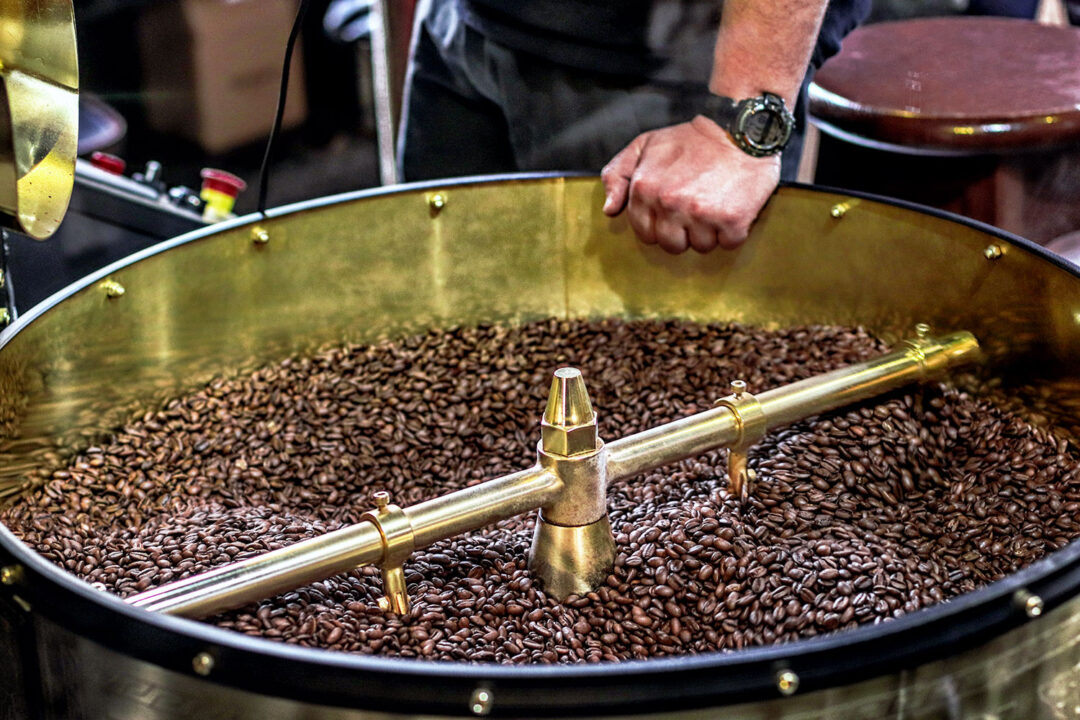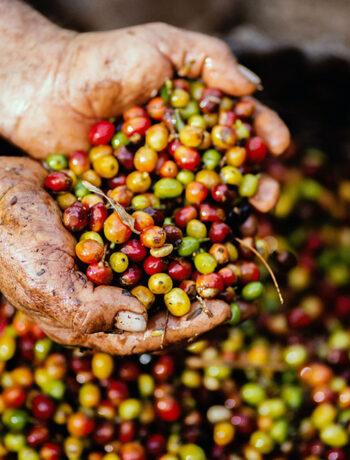Embark on a sensorial journey through the intricate world of coffee roasting, where every bean tells a story of tradition, craft, and cultural heritage. As we unravel the rich tapestry of coffee culture that spans continents and centuries, from the vibrant highlands of Ethiopia to the serene tea gardens of Japan, this exploration delves into the heart of coffee’s essence, revealing how each locale’s unique roasting methods contribute to the distinct flavors and aromas that coffee lovers cherish.
As you traverse this global narrative, discover how age-old practices merge with contemporary innovations, creating a symphony of tastes that resonate with the soul of the land and its people. Witness the meticulous artistry of roasters as they harness the elements of earth, fire, and air, transforming humble beans into liquid gold.
This journey isn’t just about savoring a beverage; it’s about experiencing the world one cup at a time, understanding the profound connection between nature, culture, and the warmth of human touch that defines the universal language of coffee.
The modern conveniences of high-tech coffee roasters have brought undeniable ease and precision to the art of coffee making. However, the soul of coffee brewing lies in its age-old practices, where traditional methods weave rich stories of culture, community, and craftsmanship.
These techniques, practiced by seasoned coffee roasters, offer a glimpse into the origins of coffee and its evolution into a global phenomenon. As we learn about these ancient practices, we uncover the foundational elements that have shaped coffee culture around the world.
Pan Roasting in Ethiopia: A Time-Honored Custom

Source: jonesbrotherscoffee.com
Pan roasting is an integral part of Ethiopia’s revered coffee ceremony, a cultural tradition performed twice or thrice a day, where community news, politics, and even gossip are shared with guests, family and friends.
Mastery Over Flames
During the ceremony, green beans are first washed and then roasted in a pan known as a “menkeshkesh.” The process is carried out over an open flame, with no knobs or buttons to regulate the temperature. This method of roasting demands not just proficiency but mastery from the roaster.
Colloquially also referred to as “menkeshkesh,” the host, usually the matriarch of the household, skillfully stirs or shakes the beans in the pan as she entertains the attendees — a performance that showcases her skill and hospitality.
She relies on sight, smell, and sound to judge when the beans are perfectly roasted. As the beans release their rich, inviting aroma, the guests are invited to enjoy the scent, creating a sensory experience as important as the drinking of the coffee itself.
The Heart of Ethiopian Culture
The Ethiopian coffee ceremony is a long-established practice that goes beyond preparing a drink; it brings people together, fosters conversation, and strengthens community bonds. In many ways, the pan roasting process is a mark of the coffee ceremony’s essence — a blend of art, skill, and cultural tradition passed down through generations.
Sumiyaki Charcoal Roasting in Japan: A Harmony of Tradition and Taste

Source: ebay.ca
Japan is renowned for seamlessly blending tradition with modernity, and the practice of sumiyaki, or charcoal roasting, stands not just as an age-old practice but also as a distinguished method of coffee preparation.
The Role of Binchotan Charcoal
Central to the Sumiyaki coffee roasting method is “binchotan,” a special type of white charcoal known to produce a steady, even heat without the smoke that typically accompanies regular charcoal. Sumiyaki, which translates to “charcoal-heated” or “charcoal-roasted” in English, depends on the unique qualities of binchotan and the meticulous control of the roaster to achieve distinctive and flavorful results.
Crafting the Perfect Roast
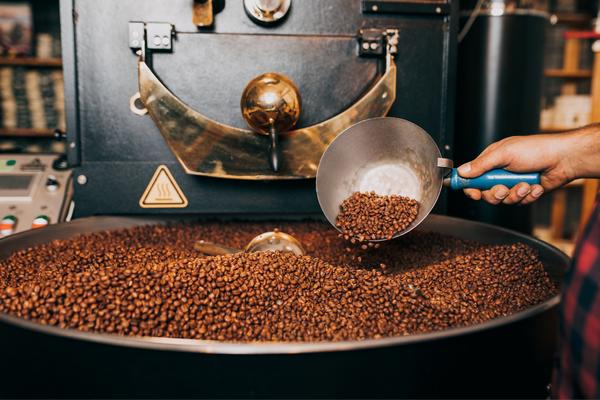
Source: torkecoffee.com
Initially, the charcoal is heated to the desired temperature. Once the binchotan is ready, the beans are added to the roasting drum. As the beans roast, the roaster listens for the “first crack,” a sign that the beans are expanding and that the roasting process is progressing.
Depending on the desired roast level – light, medium, or dark — the roaster continues to heat the beans, constantly adjusting the drum’s position relative to the heat source to ensure a uniform roast.
Experience and intuition help the roaster determine when the beans have reached the perfect roast level. The process involves not only a visual assessment but also an attunement to the aroma of the beans, which change subtly as they roast.
Once the beans are roasted to the desired level, they are quickly cooled to halt the roasting process. The process is likened to a meditative ritual that demands patience, precision, and a deep understanding of the coffee beans’ transformation.
Sumiyaki roasting is more than a method; it’s a testament to the Japanese aesthetic of simplicity and subtlety. The resulting coffee boasts a unique profile — clean, nuanced, and often with a subtle, smoky sweetness that lingers on the palate.
Clay Roasting in the Emirates: Crafting with Earth and Flame
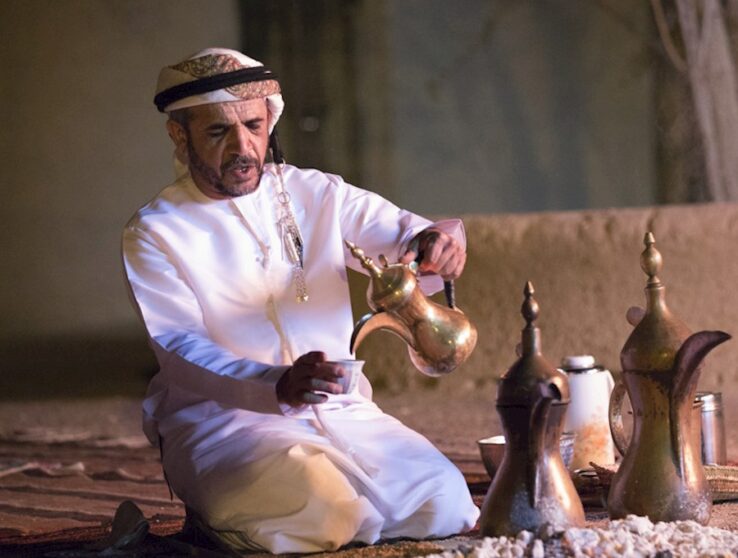
Source: abudhabiculture.ae
Gahwa, the traditional Emirati coffee, is a cultural activity that spans generations. To make this cultural beverage, Emiratis use clay roasting, a technique that binds the natural elements of earth and fire.
Traditional Clay Roasters
The clay roaster is an apparatus that is both a nod to the region’s natural resources and a reflection of its ancestral heritage. The clay, with its porous nature, provides gentle and evenly distributed heat essential for the delicate roasting process Gahwa requires.
Clay Roasting: A Timeless Art Form
The roaster places green coffee beans — often lightly spiced with cardamom or saffron — in the clay roaster. The clay roaster is then exposed to an open flame, and the beans are turned continuously to ensure that the beans roast evenly and to prevent burning.
Deeply tied to the traditional preparation of Gahwa, this roasting method typically produces light to medium roast. It preserves the beans’ intrinsic flavors while imbuing them with the subtle earthy notes from the clay. The result: smooth and flavorful coffee often served in small cups as a symbol of hospitality and shared among guests as a sign of welcome.
Mendolo Roasting in Indonesia: A Communal Art Form
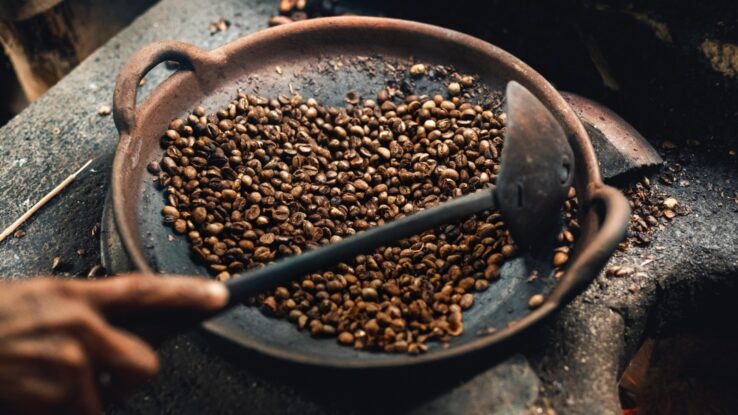
Source: lincolnandyork.com
In Indonesia, the Mendolo coffee roasting method stands as a visible marker of the region’s rich coffee culture and the pivotal role women play in it. Characterized by its communal nature, coffee roasting in Mendolo is often performed in gatherings where women come together to share in the task.
Coffee Roasting: A Communal Ritual
Green coffee beans are roasted — sometimes with rice or coconut slices — in a pan over an open flame, a technique that requires skill, patience, and a profound understanding of coffee itself. The women who undertake this task, often revered figures in their communities, are custodians of this age-old tradition.
As the beans are gently stirred over the fire, they transform from their raw green state to rich shades of brown, releasing smells that signal the deepening of flavors. The process demands constant vigilance and a tactile knowledge of the roast, which makes the Mendolo method a deeply personal and artisanal experience.
Coffee Making: A Social Fabric of Indonesian Culture
Roasting in Mendolo isn’t just about coffee; it’s a communal ritual for social interaction and storytelling. As the women roast the beans, they exchange stories and news, thus strengthening the bonds within their community. This aspect of the Mendolo method highlights coffee roasting as an integral part of social cohesion and cultural continuity.
Mendolo coffee roasting is a celebration of Indonesian heritage and a tribute to the women who have nurtured this tradition through generations, honoring the past while continuing to brew a sense of community in every cup.
Kopi Nanyang Roasting in Singapore: A Fusion of Flavor and Heritage
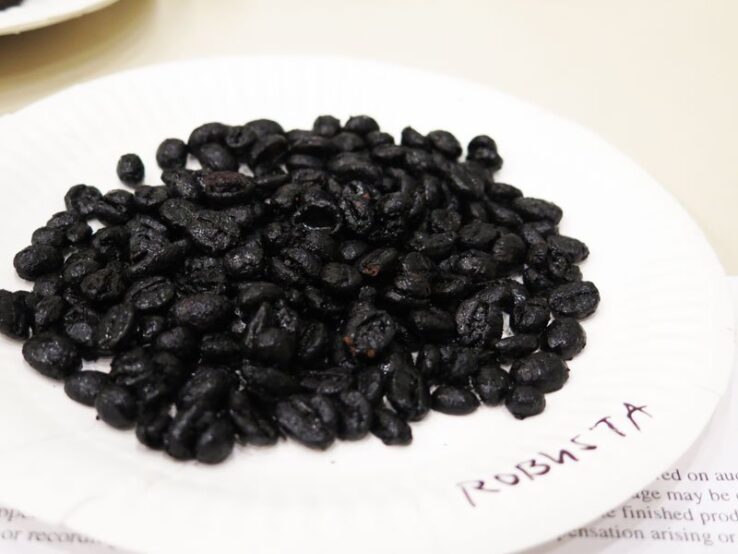
Source: sethlui.com
In bustling Singapore, Kopi Nanyang roasting reflects the nation’s rich mosaic of cultures. This unique method of coffee roasting, deeply ingrained in the local coffee scene, is a representation of Singapore’s heritage and its innovative spirit in coffee craftsmanship.
Caramelization: The Signature of Kopi
The roasting method begins with selecting and blending Robusta beans, which are combined with sugar — and occasionally, butter or margarine.
As the beans are roasted, the sugar caramelizes and the fat melts, coating the beans and leading to a unique caramelization process.
This critical step requires the skillful attention of the roaster to ensure the beans are evenly roasted without burning, balancing the heat to perfect the caramelization.
After achieving the desired roast level, the beans are quickly cooled to stop the cooking process and preserve the developed flavors. The beans are then ground finely and brewed.
Uniquely Singaporean
This entire process culminates in the rich, full-bodied flavor of Kopi Nanyang, distinguished by its slight sweetness and creamy texture. Kopi is robust and full-bodied, yet distinctly smooth and approachable — a brew that reflects the city-state’s dynamic character as a place where different cultures and tastes coalesce into something uniquely Singaporean.
Spice-Infused Roasting in Vietnam: A Symphony of Flavors
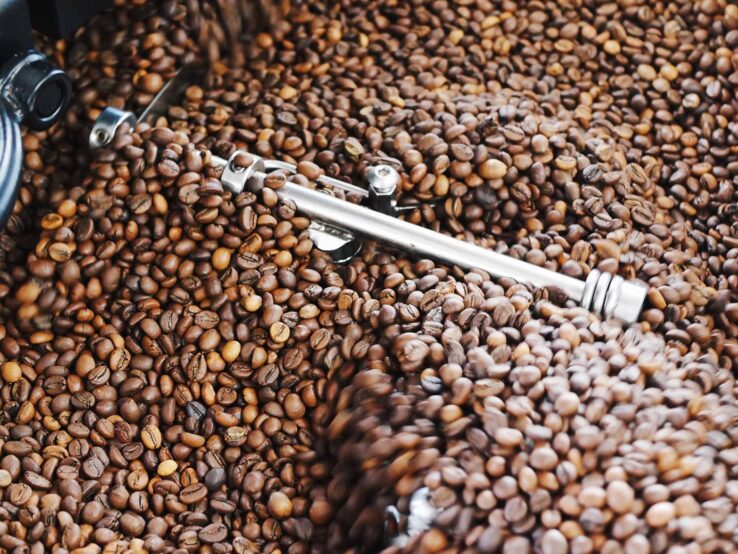
Source: saveur.com
Coffee roasting in Vietnam is a meticulous and thoughtful affair that reflects the Vietnamese’ love for depth and complexity in flavors.
Enriching the Roast with Spices
Uniquely Vietnamese, this roasting method involves the addition of spices such as cinnamon, vanilla, and other ingredients, including oil, chicory, cocoa and sugar during the roasting process. Some roasters add butter and even whiskey, resulting in rich, aromatic, and deeply satisfying layers of flavor.
Vietnam’s Flavorful Roast
As the beans roast, the spices meld with the natural coffee oils, releasing a symphony of aromas that signal the transformation taking place. Guided by experience and intuition, the roaster carefully monitors this process to ensure even heat is distributed evenly and the spices do not overpower the coffee’s natural characteristics.
Upon achieving the perfect roast level, the beans are cooled to allow the flavors to meld harmoniously. The final product: a distinctly Vietnamese cup that’s vibrant, diverse, and deeply rooted in the nation’s heritage.
The Rich Heritage of Coffee Roasting
Coffee roasting is more than just a step in the production of the popular beverage; it is a living proof of human culture and creativity. From the time-honored Ethiopian ceremonies to the meticulous Japanese Sumiyaki, the art of coffee roasting is a narrative of places, people, and passion. It invites aficionados to journey through the landscapes and legacies of the world with each sip, celebrating the diverse heritage that makes the global coffee culture so rich and enduring.

